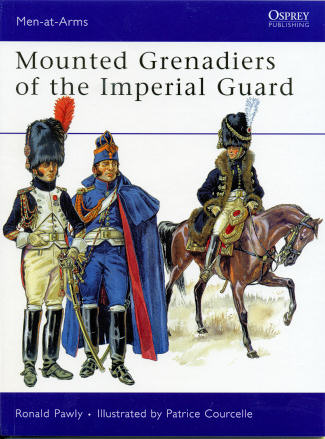 The
introduction of gunpowder did much to change the way war was fought. This was
particularly true in the match of armies where pikemen were eventually replaced
by men with guns and those throwing hand grenades. These latter men were the
grenadiers and were chosen especially for their height, ability to throw a
goodly distance and their bravery. These men were required to be in the front
lines armed with nothing but their grenades. Eventually, they became a sort of
elite amongst troops. They were first mixed in with the standard troops and
later grouped together.
The
introduction of gunpowder did much to change the way war was fought. This was
particularly true in the match of armies where pikemen were eventually replaced
by men with guns and those throwing hand grenades. These latter men were the
grenadiers and were chosen especially for their height, ability to throw a
goodly distance and their bravery. These men were required to be in the front
lines armed with nothing but their grenades. Eventually, they became a sort of
elite amongst troops. They were first mixed in with the standard troops and
later grouped together.
While the gun replaced the pikemen, the slow reloading of
these weapons meant that cavalry was still an effective force. These 'shock
riders' were able to rush in after the initial volley and cause their usual
havoc amongst the forces while the guns were being reloaded and new fuses lit
for the grenades. It was seen that combining the grenadiers with cavalry to
produce mounted grenadiers would be an advantage and so this rather elite group
became even more so.
Along with their abilities, came different uniforms from the
rest of the troops. These men could not have the same hats as others as the
normal wear would get in the way of their throwing arm. So different head gear
became the norm for these men, eventually progressing to the most impressive
bear-skin hats with the plume of the grenadier attached.
Napoleonic uniforms are some of the most colorful and complex
of any period. Authro Ronald Pawley has done a fine job of covering the units
and their use during the time of Napoleon. The book starts with the Consular
Guard, then describes the Imperial Guard and their deployments in the time frame
of 1807 to 1811. Russia in 1812 has its own section followed by the rebuilding
of the regiment and its use in the later defensive campaigns. Finally, there is
a section on Napoleon's abdication and the time known as 'The Hundred Days'. All
this is superbly illustrated by Patrice Courcelle as well as a goodly number of
period illustrations an photos of extant uniforms and equipment.
It all makes for a book that is both interesting and
informative. Like all of Osprey's titles, it is one that you can buy with
confidence in knowing you are getting the best.
December 2009
For more on the complete line of Osprey books,
visit www.ospreypublishing.com. In the US, it is
Osprey Direct at 44-02 23rd St, Suite 219, Long Island City, NY 11101., where you can
get a catalogue of available books.
If you would like your product reviewed fairly and quickly, please contact
me or see other details in the Note to
Contributors.
 The
introduction of gunpowder did much to change the way war was fought. This was
particularly true in the match of armies where pikemen were eventually replaced
by men with guns and those throwing hand grenades. These latter men were the
grenadiers and were chosen especially for their height, ability to throw a
goodly distance and their bravery. These men were required to be in the front
lines armed with nothing but their grenades. Eventually, they became a sort of
elite amongst troops. They were first mixed in with the standard troops and
later grouped together.
The
introduction of gunpowder did much to change the way war was fought. This was
particularly true in the match of armies where pikemen were eventually replaced
by men with guns and those throwing hand grenades. These latter men were the
grenadiers and were chosen especially for their height, ability to throw a
goodly distance and their bravery. These men were required to be in the front
lines armed with nothing but their grenades. Eventually, they became a sort of
elite amongst troops. They were first mixed in with the standard troops and
later grouped together.